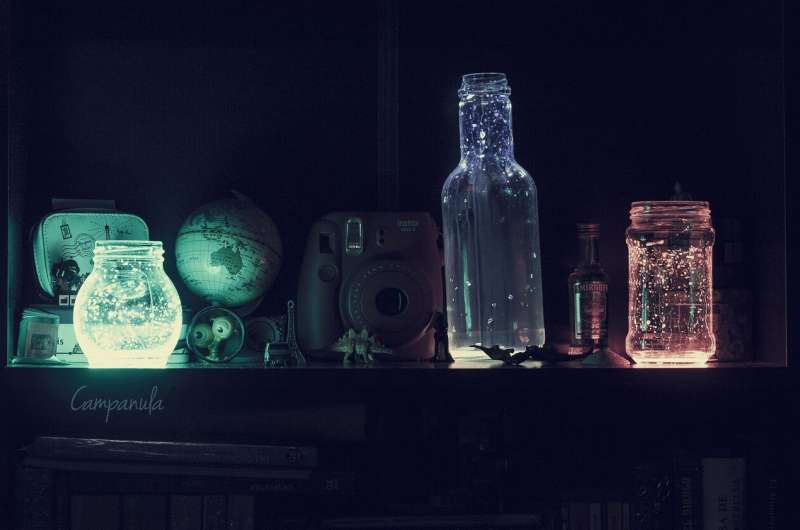Gelatin foams show unexpected ultralong organic phosphorescence for optical applications

Strong, lightweight and biocompatible foams glow in the dark when ultraviolet light is shone on them, RIKEN chemists have discovered. This phosphorescence could have diverse applications, such as imaging biological samples under the microscope.
Phosphorescent materials absorb high-energy light and then gradually release the energy as light of a longer wavelength. This afterglow can persist for minutes or even hours—much longer than is possible for fluorescent materials.
Inorganic compounds are widely used as phosphorescent materials, but some carbon-based, organic materials can also show a persistent glow, known as ultralong organic phosphorescence. Organic materials are potentially easier to manufacture than inorganic phosphors, and researchers can fine-tune the color and duration of their glow by altering their molecular structures, tailoring them for possible applications including anti-counterfeiting and optical sensing. But ultralong organic phosphorescence materials tend to be brittle and contain toxic components, which has limited their practical use.
Now, Yasuhiro Ishida at the RIKEN Center for Emergent Matter Science and colleagues have discovered that gelatin, a mixture of peptides and proteins used as a gelling agent in food and medicines, can be turned into ultralong organic phosphorescence materials that are strong.
The researchers mixed gelatin with water to form hydrogels, and then freeze-dried them to create porous foams. After testing various gelatin concentrations and freezing conditions, the researchers found that chilling the mixture to -10 degrees Celsius produced the strongest foam, which was capable of withstanding high pressures. "Despite being 80% air, a piece of foam the size of a sugar cube can support a 40 kilogram weight," says Ishida. Electron microscopy revealed that the foams had very regular structures, with pores of similar shapes and sizes.
After the team shone ultraviolet light on the foams, they glowed yellow-green for several seconds. "I was so surprised when my student Suzhi Cai serendipitously found that gelatin foams show strong ultralong organic phosphorescence," recalls Ishida. "Such strong ultralong organic phosphorescence could never be imagined based on gelatin's molecular structure."
The researchers found that clusters of chemical groups called carbonyls were responsible for the foams' ultralong organic phosphorescence. Their phosphorescence lifetime decreased after exposure to air, because moisture disrupted these carbonyl clusters.
The team made similar foams from different materials, including sodium polyacrylate and poly(acrylamide). Although not as strong as the gelatin foams, these foams all showed ultralong organic phosphorescence activity, glowing blue or deep green. Mixing gelatin with polymers called PVA and PVP also made them phosphoresce.
The gelatin foams are non-toxic, and Ishida now hopes to develop them as ecofriendly materials for optical sensors.
More information: Suzhi Cai et al, Ultralong Organic Phosphorescent Foams with High Mechanical Strength, Journal of the American Chemical Society (2021). DOI: 10.1021/jacs.1c07674
Journal information: Journal of the American Chemical Society
Provided by RIKEN



















